#100 in Vietnam
Dồi Tiết: Basic Information
Pronunciation
Alternative Name(s)
Dish Type
Course
Mealtime
Popular Dồi Tiết Variations
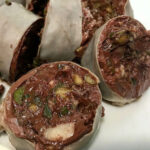
Dồi Lợn (Heo)
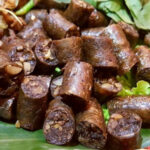
Dồi Chó

Dồi Sụn

Dồi Lươn
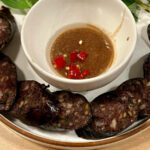
Dồi Rắn

Dồi Cổ Vịt (Ngan Or Ngỗng)
Dồi Tiết: Ingredients and Preparation
Main Ingredients
Main Cooking Method
Preparation Process
Dồi Tiết: A Deep Dive
Cultural Significance
Taste
Texture
Aroma
Color
Serving Style
Serving Temperature
Accompaniment
Occasions
Seasons
Special Diets
Calories
Popularity
Popular Similar Dishes
- Sausage
- Chinese Sausage
Popular Dining Area
Dồi tiết, or dồi huyết, is a unique Vietnamese blood sausage that mainly utilizes animal intestines for stuffing with a mixture of pig blood, pork, various herbs, seasonings, mung beans, and fish sauce. After being packed in the intestine, Vietnamese locals will steam dồi tiết to cook through all the elements.
Once cooked, the blood in the stuffing mixture gives dồi tiết a dark gray color. Interestingly, people often puncture the stuffed intestine intentionally using toothpicks to let off some of the liquid and prevent the dồi from bursting.
In Vietnam, both the Southern and Northern regions have this kind of blood sausage that comes with various adaptations. Typically, the blood is only a part of dồi tiết in Vietnam, as the additional proteins like meat and other chopped-up organs are employed to serve dồi tiết as a street food dish.
When served, people often slice the cooked dồi tiết into bite-sized pieces for accompanying various herbs and dipping sauce. Alternatively, some will grill the dồi slices for a golden brown surface.
Learn more about the many versions of dồi tiết before knowing about the process of creating this unique blood sausage. Plus, I’ve also prepared some pros and cons relating to dồi tiết and inquiries relating to it. Additionally, you should discover some specialties that are similar to dồi tiết.
Key Points
Dồi Tiết Images
What Are the Variants of Dồi Tiết?
When it comes to dồi, a slight change in the ingredients or cooking method can produce a different result. However, let me introduce you to 6 popular versions of this blood pudding in Vietnam:
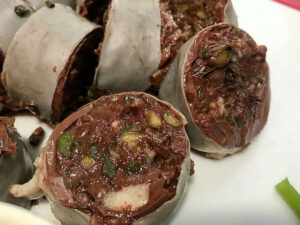
Dồi Lợn (Heo)
Traditional pork blood sausageSoutherners use the small intestineNortherners use the large intestine
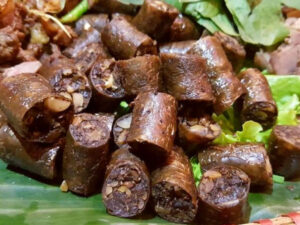
Dồi Chó
Made with various offal and organs of dog or pigGrilled after being steamed
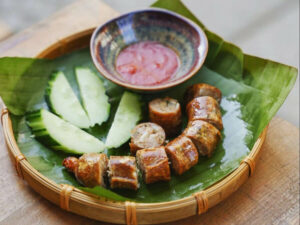
Dồi Sụn
Contains cartilage, providing a crunchy texture
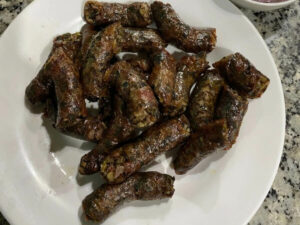
Dồi Lươn
Features minced eel meat with the bone removedSprinkled with crushed peanuts when serving
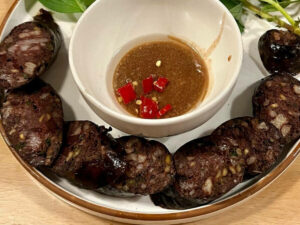
Dồi Rắn
Snakes, including meat and bones, are minced for incorporating with herbs
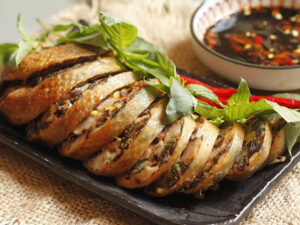
Dồi Cổ Vịt (Ngan Or Ngỗng)
Utilizes the neck of ducks or geeseHas a bold flavor and a fatty profileUse the neck skin as the casing to contain the stuffing
Next up, discover the basic process of making dồi tiết in Vietnam to expand your understanding of this dish.
How Dồi Tiết Is Made?
Dồi tiết is made differently depending on the region in Vietnam. For that, let me give you a general process of creating dồi tiết:
Step 1: Preparation of Ingredients
Clean and prepare animal intestines for the casing, and prepare the filling with fresh animal blood, minced meat, and other ingredients.
Step 2: Mixing the Filling
Combine the blood with minced meat and additional ingredients, adding seasonings like salt, pepper, and local spices.
Step 3: Stuffing the Intestines
Carefully stuff the prepared filling into the cleaned intestines using a funnel or sausage stuffer, ensuring not to overfill.
Step 4: Sealing and Segmenting
Tie off the stuffed intestines at intervals to create individual sausages, adjusting the length as preferred.
Step 5: Cooking the Sausage
Steam the dồi tiết, occasionally puncturing them to prevent bursting and allow excess liquid to escape.
Step 6: Final preparations and Serving
Optionally grill or fry the cooked sausages for extra texture and flavor, then slice and serve with accompaniments like herbs, dipping sauces, or pickled vegetables.
In case you’re wondering whether dồi tiết is suited for your diet, check out some of the benefits and drawbacks that this Vietnamese pudding offers when consumed.
Pros and Cons of Eating Dồi Tiết
Here are some of the features of eating dồi tiết that you should weigh up carefully before consuming it:
Pros
Cons
Remember, there is more to dồi tiết, especially when people have a lot of concerns about this Vietnamese person of blood pudding.



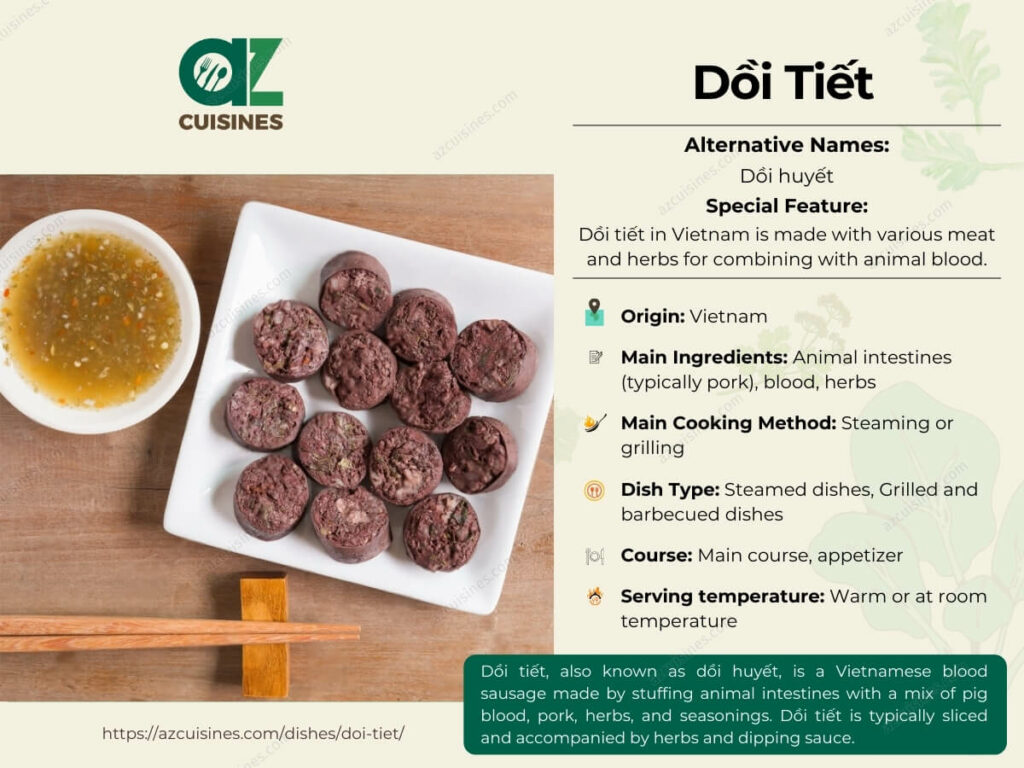
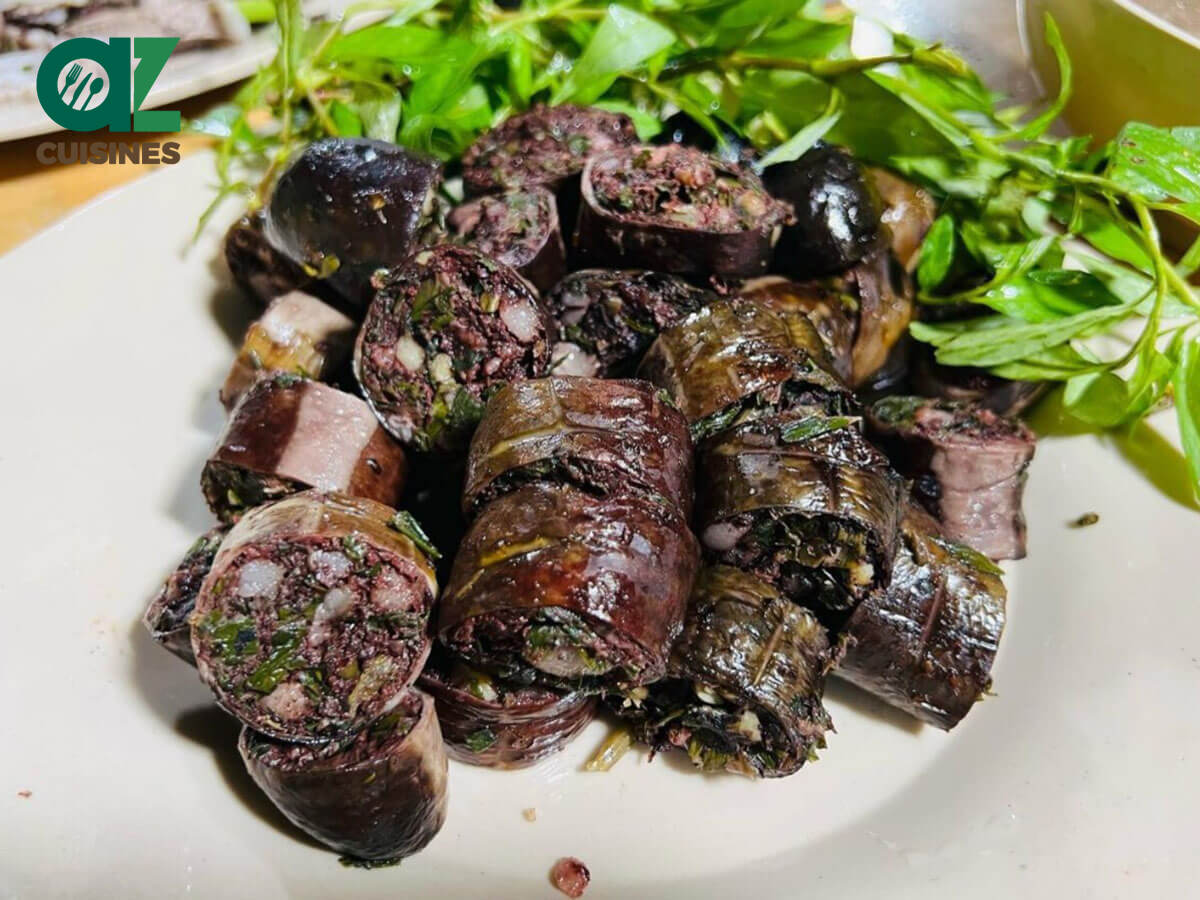
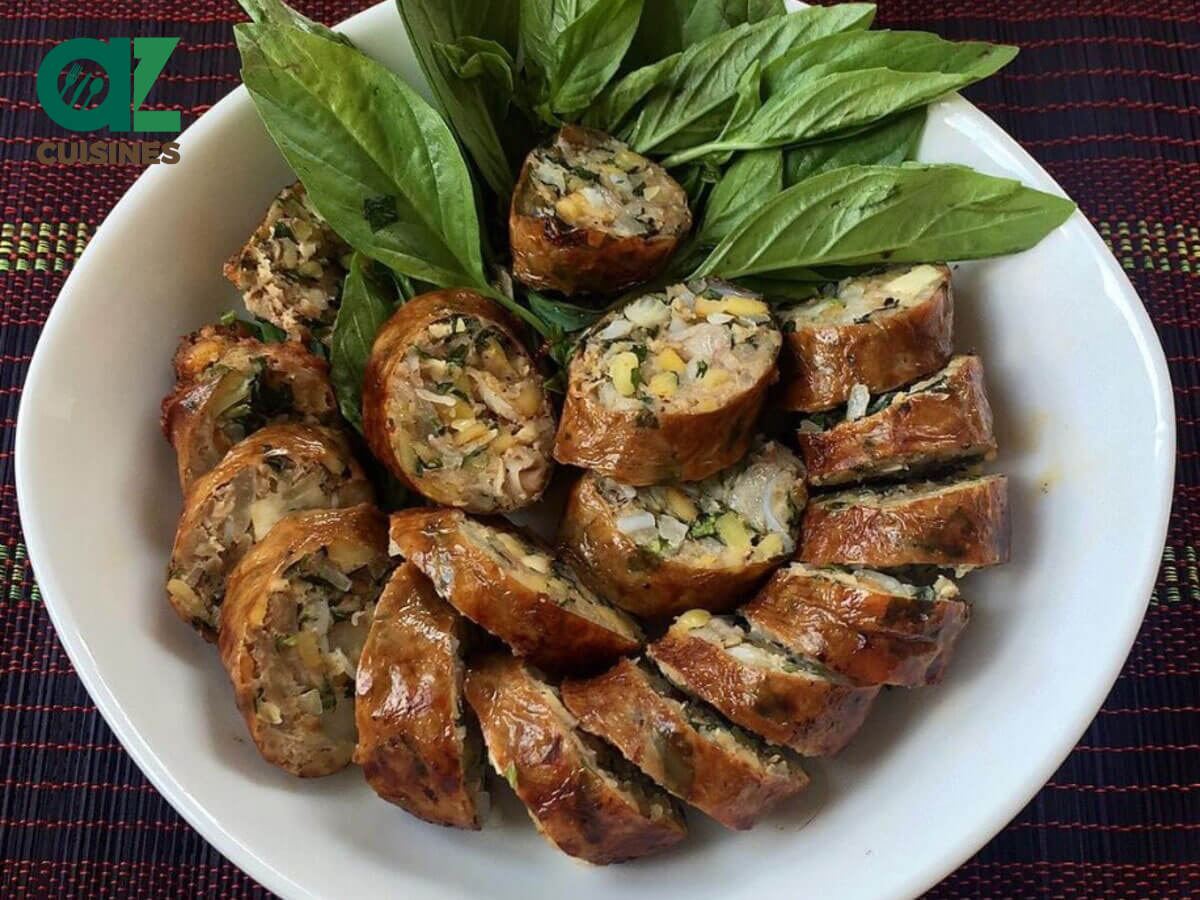
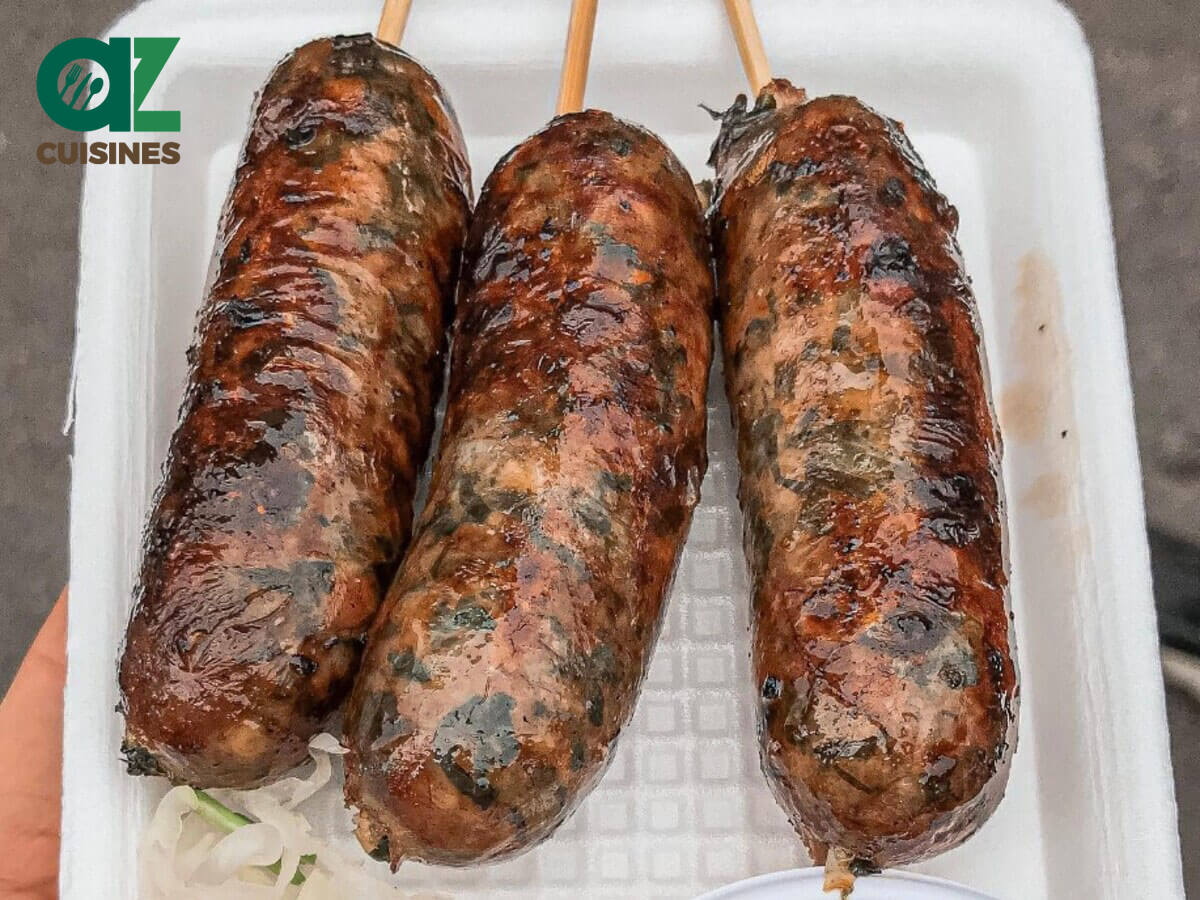
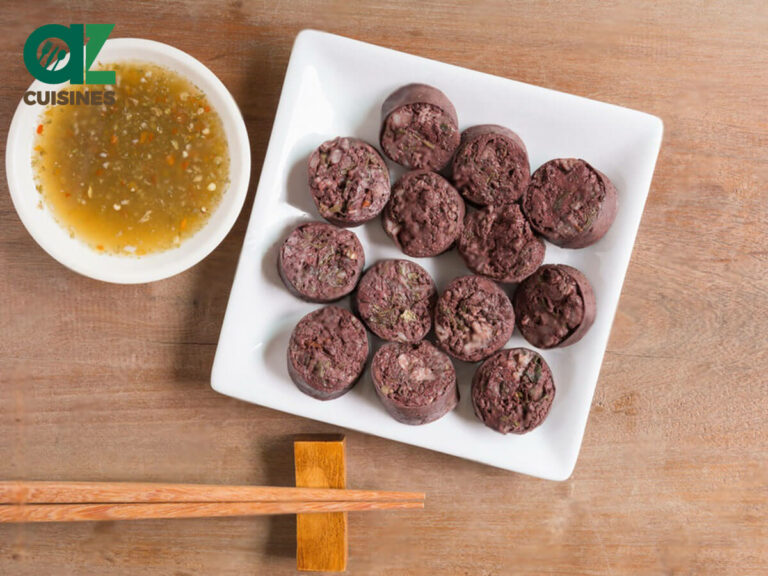
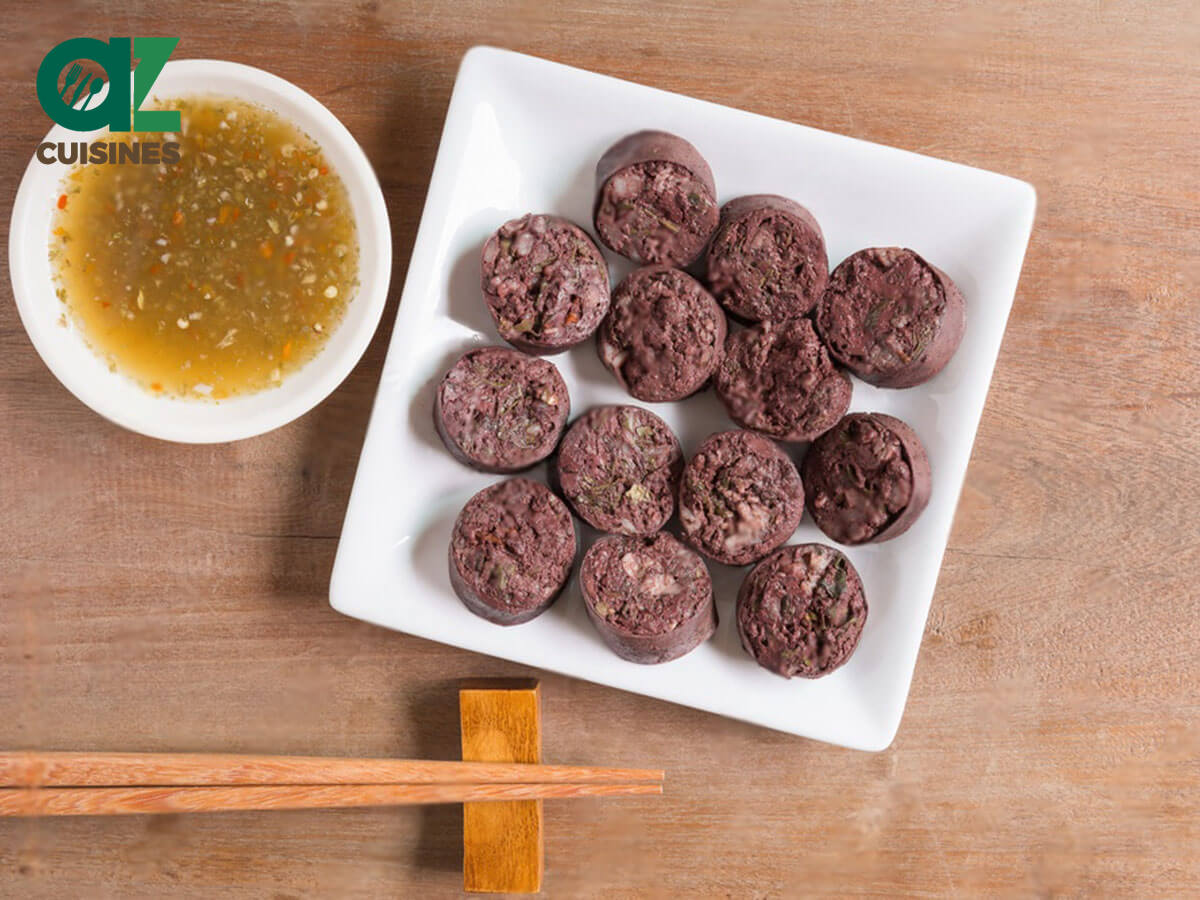
Truc Tran (Kris)
Senior Food Editor
Expertise
Home Cooking, Meal Planning, Recipe Development, Baking and Pastry, Food Editor, Cooking-video Maker, Vietnamese Food Evaluation Expert
Education
Truc Tran (Kris), an experienced food writer and editor, is great at exploring and describing global cuisines, from simple street food to fancy dining. In her writing, she skillfully mixes different flavors, cooking methods, and culinary traditions, showing the unique character of various cultures through their food and drinks. On azcuisines.com, Kris highlights her knowledge, especially in Asian cuisine and worldwide traditional dishes.